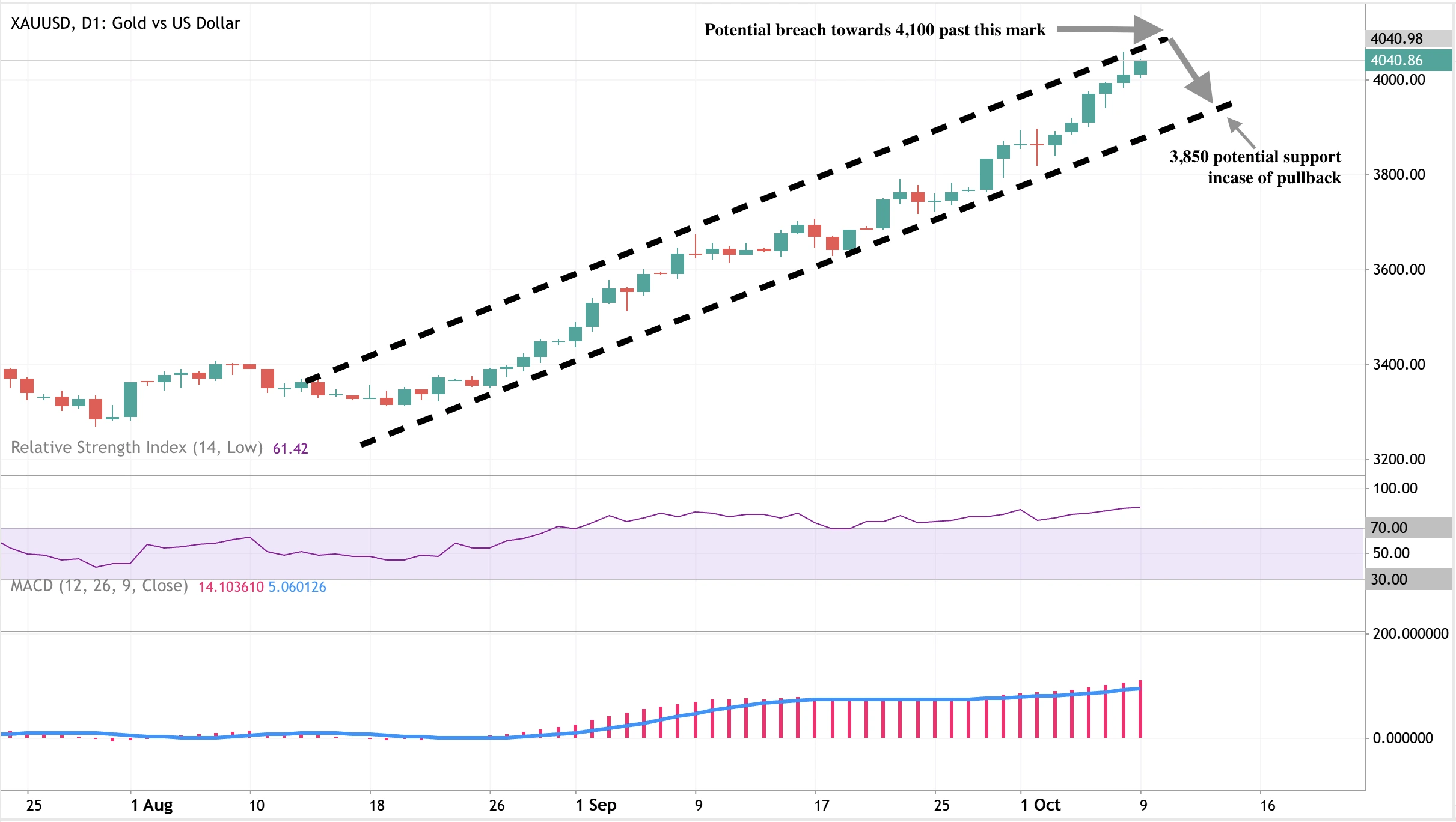Gold vs Treasury yields 2025: Has the safe-haven correlation collapsed?
Gold vs Treasury yields 2025: Has the safe-haven correlation collapsed?
Gold vs Treasury yields 2025: Has the safe-haven correlation collapsed?

The long-standing inverse relationship between gold and U.S. Treasury yields - one of the most reliable hedges in global markets - appears to have broken in 2025. Gold has climbed past $4,000 per ounce for the first time in history, even as Treasury yields have remained relatively stable and the U.S. dollar has weakened.
This shift signals a structural change in how investors perceive safety. U.S. government bonds, once the bedrock of portfolio protection, are losing credibility amid record deficits, inflation concerns, and political noise. In their place, gold has re-emerged as the preferred global safe haven.
Key takeaways
- About $9.2 trillion in U.S. marketable debt is maturing in 2025, forcing the Treasury to refinance record volumes amid limited investor demand.
- The federal deficit, projected at $1.9 trillion, is fuelling long-term debt concerns and adding fiscal pressure.
- Ongoing inflationary trends and tariff-related policy shocks have widened the term premium, making Treasuries behave more like risk assets.
- The U.S. dollar’s weakness despite elevated yields reflects waning investor trust in fiscal management.
- Gold is up more than 40% year-to-date, outperforming major indices and commodities as central banks and investors rotate from bonds into tangible assets.
U.S. Treasury market pressure and debt rollover risk
The U.S. Treasury market has faced one of its most turbulent years in decades. An unprecedented wave of maturing debt - around $9.2 trillion, largely concentrated in the first half of the year - forced rapid refinancing. Investor demand failed to match supply, pushing bond prices lower and yields higher.
Meanwhile, the $1.9 trillion fiscal deficit has deepened fears of unsustainable government borrowing. Investors began demanding higher yields to hold U.S. debt, effectively treating Treasuries as a source of risk, not refuge.
Policy uncertainty and trade disruptions have compounded volatility, adding to a higher term premium and undermining the bond market's defensive nature. The result: Treasuries, once the cornerstone of portfolio stability, are now part of the volatility cycle themselves.
Gold’s safe-haven resurgence amid Treasury volatility
Historically, Treasury sell-offs have bolstered the U.S. dollar, often weighing on gold. But 2025 has turned that dynamic on its head. The dollar’s simultaneous decline alongside Treasuries reflects a broader crisis of fiscal confidence.
As government debt levels surged, gold stepped into the vacuum. Institutional investors, central banks, and funds have all expanded allocations to gold and gold-backed ETFs, viewing the metal as a store of value detached from policy credibility.

The outcome: a historic gold rally past $4,000 per ounce, marking its strongest annual performance since the late 1970s and a clear break from yield-linked trading behaviour.
Gold vs U.S. Treasury Yields - 2025 Performance Comparison
Sources: World Gold Council (Mid-Year 2025 Outlook), Reuters (8 October 2025), YCharts U.S. 10-Year Treasury Rate Series.
The data makes it clear: gold and Treasury yields are now moving in tandem. A 42% rise in gold prices against steady yields around 4.1% underscores the collapse of the traditional inverse correlation. Both assets now respond to the same driver - fiscal and policy uncertainty.
Consequences of the gold–Treasury correlation breakdown
The disintegration of the gold–Treasury hedge has increased market-wide volatility. Yields remain elevated, while equities are struggling to regain balance in the absence of reliable defensive assets. The weaker dollar has also aggravated inflationary fears, reinforcing gold’s safe-haven demand.
Although some analysts anticipate a potential yield decline if the Federal Reserve cuts rates in response to slowing growth, the broader correlation shift appears structural. For now, gold and Treasuries are no longer opposites - they’re moving together as part of the same fiscal narrative.
Gold price forecast 2025: Will gold price stay above $4,000?
Analysts are split on where gold goes next. Goldman Sachs expects prices to stay near record levels through 2026 if fiscal uncertainty continues, while others suggest a moderate pullback if recession risks push yields lower.
Still, the bigger picture is clear: the U.S. debt trajectory and inflation persistence have transformed investor behaviour. Treasuries no longer offer clear protection in downturns, and gold has become the default anchor for portfolio stability.
Gold price technical insights: Trend strength and chart structure
At the time of writing, the gold chart on Deriv MT5 shows strong upward momentum. The metal remains near the upper edge of its long-term ascending channel, while RSI readings indicate potential exhaustion in the short term. The MACD histogram continues to print higher highs, confirming that the broader trend remains intact.

Gold investment strategy amid Treasury market uncertainty
The 2025 landscape signals a new era for portfolio hedging. Gold’s surge above $4,000 reflects not just inflation concerns but a deeper trust shift away from government-backed assets.
For traders and investors, this reinforces gold’s role as a strategic store of value during fiscal instability. On Deriv MT5, gold can be traded alongside major indices, currencies, and commodities under one account.
Tools like Deriv’s trading calculators accurately estimate margin, contract size, and pip value, supporting precise position management in volatile conditions.
Gold trading strategies on Deriv MT5
Deriv provides several ways to trade gold, tailored to different trading styles and risk profiles.
Deriv MT5 offers access to spot gold (XAU/USD) with spreads starting from 0.3 pips, high execution speed, and deep liquidity suitable for both individual and institutional clients.
To support decision-making, Deriv’s calculators and in-platform tools allow clients to evaluate position size, margin requirements, and risk parameters in real time. Combined with integrated stop-loss and take-profit functionalities, these resources enable disciplined portfolio management when trading volatile assets like gold.
For more background on the changing dynamics of gold and safe-haven assets, explore Deriv’s gold insights and related analyses on commodities and macroeconomic shifts available on the Deriv blog.
The performance figures quoted are not a guarantee of future performance.















